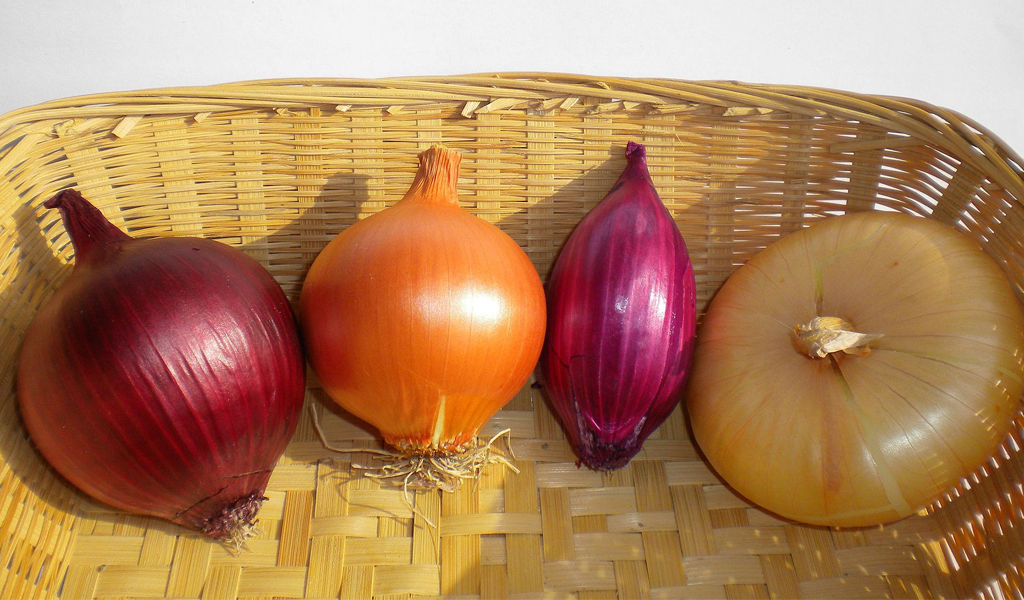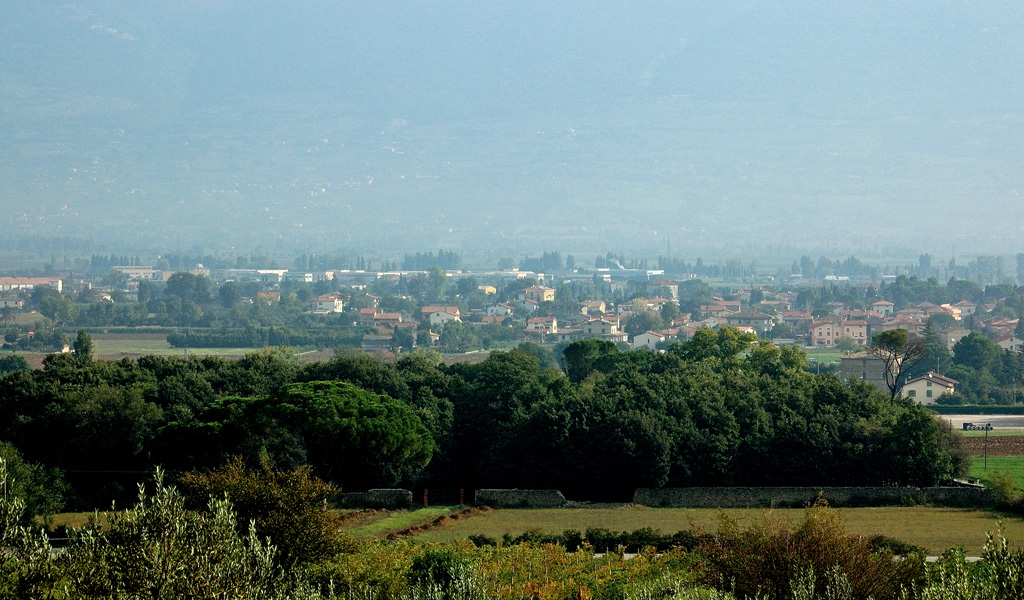Cannara onions? Everyone knows them because they have long since crossed the borders of Umbria. They were famous over a century ago when the region was all rural, but we do not know how people lived more than a century ago, when life was marked only by the rhythms of agricultural work and the care of animals. Mr. Mario Scaloni, from Cannara, had me read some period documents and what follows is a brief overview of rural life in those years, onions included.
In 1882 Cannara had 2592 inhabitants of which 200 landowners and all the others farmers or laborers. In that year a study by Guido Baldacci was printed on the agricultural and economic conditions of the territory of Cannara. The situation was truly depressing, the life of the farmer oscillated between hard and very hard, it was practically the same as 1000 years before and even more. In 1882 there were no machines to work the land, there were no chemical products to fertilize the land; Italy at that time was essentially a peasant land and remained so until the 1950s of the last century. Baldacci observes, comments, but sees few solutions. The farmers eat little and badly, they feed only on legumes, corn and vegetables. Baldacci, a man of his time, admits that if they raised some rabbits the diet would benefit. He also finds that the land should be cultivated better and if it doesn’t yield enough it’s the fault of the farmers who don’t listen to advice and repeat gestures that are thousands of years old. They don’t accept new theories, because the farmers didn’t accept advice from those who don’t work the land. Agriculture was still a niche science. The lands of the valley and those of the coast were over-exploited and weren’t cultivated well because the clod had to be worked deeply, worked with a spade. But the layer of clay was very hard, there were no machines, the only machine was the back and the farmers’ backs are strong but have a limit. The watercourses had been regulated twenty years earlier, as Baldacci tells with satisfaction, now the water was contained and the swamps that were a source of malaria had disappeared, even if a little malaria remained in the area, but it was a normal inconvenience and didn’t deserve too many words. At that time onions had already conquered the market because those of Cannara kept well, they even lasted nine months without rotting. An important prerogative when conservation was a huge problem. The consumption of onions was not reserved only for local use, but merchants from various parts of Italy, even from Livorno, arrived in Cannara. The Livornese put the onions on the ships and exported them.

Wine, on the other hand, was only a local production. Barbera was drunk a lot, but the crops that would explode a century later were already in the area. Halfway up the hill there were Vernaccia vines, which were harvested when the grapes were withered. The wine was good, but pale, so it was dyed with a less important local wine called Tintarolo and the Vernaccia took on a beautiful ruby red color. Today Tintarolo still exists, it is not used to modify other wines, it has lost its original name and everyone knows it by the noble name of Sagrantino.
Of course olive trees were grown: not as many as now, but they produced such good oil that it received a diploma in London and a bronze medal in Florence. The olive tree was useful, but the animals were more important. For 2,592 inhabitants there were 4,683 animals, including cows, lambs, donkeys and horses. The animals were a source of income and survival, they had to stay in good health. But sometimes they got sick and if it was really necessary they called the vet. Money was always limited so the doctor to treat people was not foreseen, better to take care of the animals.

It was around 1880 that Dr. Abramo Marchetti, a military veterinarian, found himself hanging around the countryside around Cannara. He knew the town well and knew that, to get medicine for both humans and animals, the people of Cannara had to go to Santa Maria degli Angeli. A nice walk of about 10 kilometers there and 10 back. Even though at that time they were used to walking, in case of emergency, going and coming back took too long. So Dr. Marchetti decided to get a diploma as a pharmacist and opened a small spice shop (which we will call a pharmacy) right in Cannara. At the time, a pharmacist was a chemist-artisan who prepared remedies in the laboratory and often also had a small botanical garden where the herbs he needed grew. In many pharmacies, alcoholic beverages were also prepared. For example, in the areas of the Baltic republics, vodka was produced, in those of the Alps there was no shortage of grappa, and in the pharmacy laboratory there could not be a lack of a distiller.

Dr. Marchetti must have used his veterinary knowledge to treat animals and prepare medicines and remedies for animals. The work was both manual and artisanal. The tablets were made on the spot using a special mold and were sold loose. Even the syrup was not sold in bottles, but in spoonfuls to be consumed on the spot. The same thing happened with castor oil, a powerful laxative: you went to the pharmacy to get a spoonful and then rushed home. If the pharmacist was working in the laboratory, which was often the home kitchen, someone had to stay at the counter. Marchetti put the pharmacy assistant at the counter, a regular figure who was always present. Here in Cannara, however, a new fact occurred that caused quite a stir: Marchetti was helped by his wife Maria Aurora Baldaccini. However, she had no qualifications, degrees had not yet been established and women could not even access the diploma. Maria Aurora was the daughter of pharmacists and had learned the basic notions in the family. A woman who worked in a pharmacy at the beginning must have caused a scandal: a rigid male tradition is broken and, when something begins to crack, a crack begins that continues and is unstoppable. Fifty years later in 1936, 3 female graduates will enter the pharmacy of Cannara. The crack had reached the bottom.
Renata Covi
Latest posts by Renata Covi (see all)
- Tale of Cannara at the end of the 19th century: wine, onions and a woman in the pharmacy - April 15, 2025
- Romea Germanica: the ancient pilgrimage route, today it can be retraced on foot or by bike - December 12, 2024
- When Italy lost its head over a picture card - September 19, 2024

